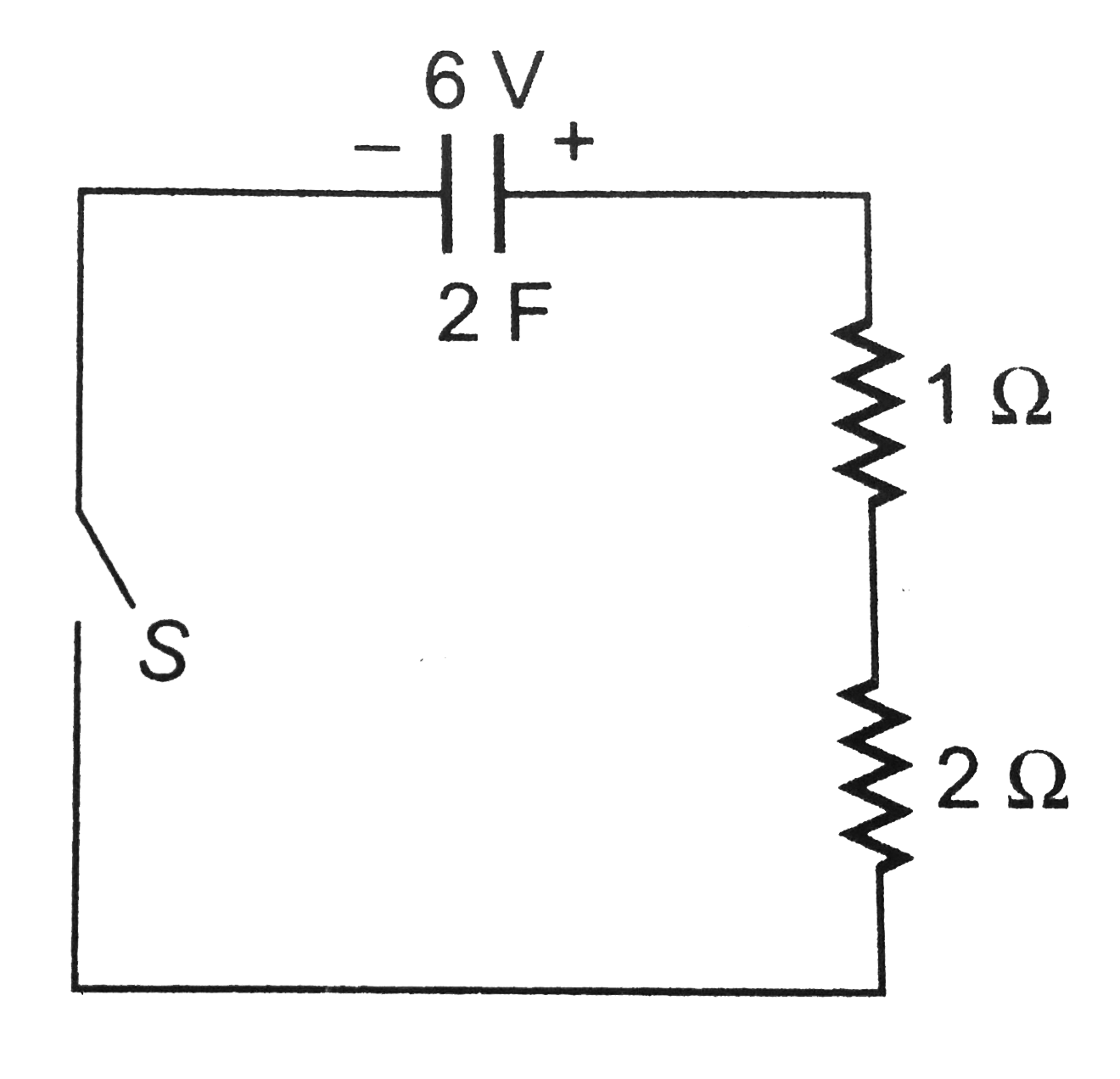Is it practically possible to have situtations where (E−V)<0?
No, because (E−V) represents K.E. which cannot be negative.
Topper's Solved these Questions
- WORK, ENERGY AND POWERBOOK - PRADEEPCHAPTER - WORK, ENERGY AND POWEREXERCISE - Short Answer Question
52 Videos
- WORK, ENERGY AND POWERBOOK - PRADEEPCHAPTER - WORK, ENERGY AND POWEREXERCISE - Long Answer Question
24 Videos
- WORK, ENERGY AND POWERBOOK - PRADEEPCHAPTER - WORK, ENERGY AND POWEREXERCISE - Conceptual Problems
27 Videos
- THERMODYNAMICSBOOK - PRADEEPCHAPTER - THERMODYNAMICSEXERCISE - Assertion- Reason Type Questions
19 Videos
Similar Questions
Knowledge Check
A capacitor of 2F (practically not possible to have a capacity of 2F) is charged by a battery of 6v. The battery is removed and circuit is made as shown. Switch is closed at time t=0 . Choose the correct options.
 AAt time t=0 current in the circuirt is 2ABAt time t=(6ln2)second, potential difference across capacitor is 3VCAt time t=(6ln2) second potential difference across 1Ω resistance is 1VDAt time t=(6ln2) second, potential difference across 2Ω resistance is 2V
AAt time t=0 current in the circuirt is 2ABAt time t=(6ln2)second, potential difference across capacitor is 3VCAt time t=(6ln2) second potential difference across 1Ω resistance is 1VDAt time t=(6ln2) second, potential difference across 2Ω resistance is 2VThe rate of transpiration will be very less in a situtation where
Aground water is sufficent avaibleBwind is blowingCenviromnet is very hot and dryDrelative humitdity is very highThe atmosphere on a planet is possible only if [ where vrms is root mean square speed of gas molecules on planet and ve is escape speed on its surface ]
Avrms=veBvrms>veCvrms≤veDvrms<ve
The E(Θ)(M2+/M) Value for copper is positive (+0.34V) . What is possibly the statement-2 for this?
View SolutionThe E0(M2+/M) value for copper is positive (+0.34V). What is possibly the reason for this?
View SolutionA particle of mass m and charge q is moving in a region where uniform, constant electric and mangetic fields →Eand→B are present. →Eand→B are parallel to each other. At time t=0, the velocity →v0 of the particle is perpendicular to →E (Assume that its speed is always <<c, the speed of light in vacuum). Find the velocity →v of the particle at time t. You must express your answer in terms of t,q,m, the vector →v0,→E and →B and their magnitudes →v0,→E and →B.
View SolutionThe E∘(M2+/M) value for copper is positive (+0.34 V). What is possibly the reason for this ?
View SolutionThe E0(M2+/M) value for copper is positive (+0.34V). What is possibly the reason for this?
View Solution
